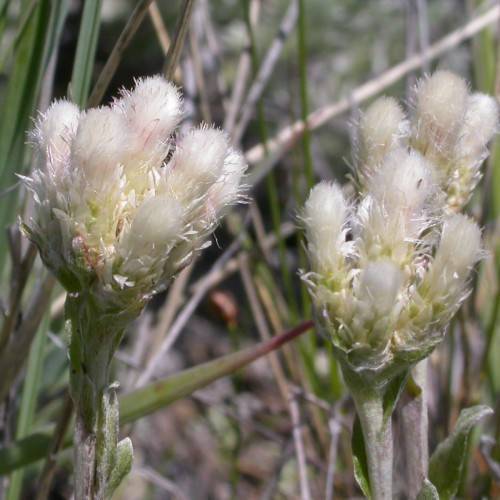
Rosy Pussytoes
Antennaria rosea subsp. confinis
Watering:
Minimal
Hardiness Zone:
Sun:
full sun,part shade
Growth Rate:
Low
Drought Tolerant:
Yes
Salt Tolerant:
Yes
Care Level:
Low
watering
Hooker's Pussytoes (Antennaria racemosa) should be watered when the soil starts to dry out on the surface. Typically, the plant needs to be watered every 4-7 days. Make sure to water the plant deeply every time, so that the moisture wets the entire root system. Try not to water too much, as the plant will not thrive in soggy soil. When watering, avoid getting the leaves wet, as this can promote fungal disease.
sunlight
Hooker's Pussytoes prefers bright, indirect sunlight, and tolerates both full sunlight and partial shade. It does best in filtered light, such as dappled shade under trees or shrubs, or beneath garden breezeways. It requires 4-8 hours of direct sunlight to thrive, and will not do well if placed in completely shaded areas. This species of plant should not be placed in extreme full sunlight for more than 4 hours, as this can cause the leaves to scorch and become damaged. However, it does quite well in cooler climates and can easily handle up to 12 hours of direct sunlight in the summer.
pruning
Hooker's Pussytoes (Antennaria racemosa) should be pruned in early spring, when the plant has just begun to emerge from dormancy.Remove dead or diseased stems by cutting them off just above the shared junction with a healthy stem, and cut out any stems that are too weak or upright growing.If the plant is becoming congested, it can be thinned out, but take care not to prune more than a third of the stems in any 1 year.The plant benefits from light pruning every year, as it helps to maintain an attractive shape and reduces the risk of overcrowding.
